Bloodroot
- October 17, 2023
- 0 comment
Bloodroot, scientifically known as Sanguinaria canadensis, is a captivating and distinct perennial herb native to the woodlands of eastern North America. This unique plant derives its name from the vibrant red-orange sap found in its rhizomes and stems, which has historically been used by indigenous cultures for various purposes. Bloodroot is renowned not only for its cultural significance but also for its striking appearance; it boasts delicate, solitary white flowers with distinctive, lobed leaves.
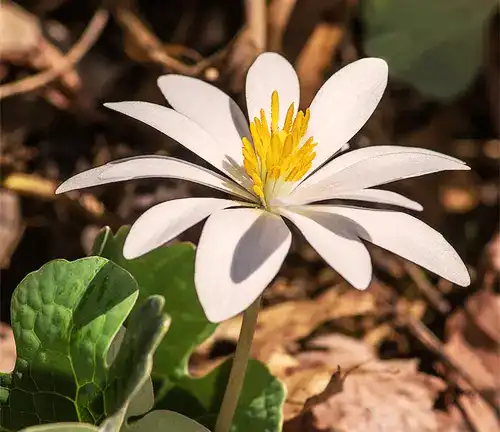
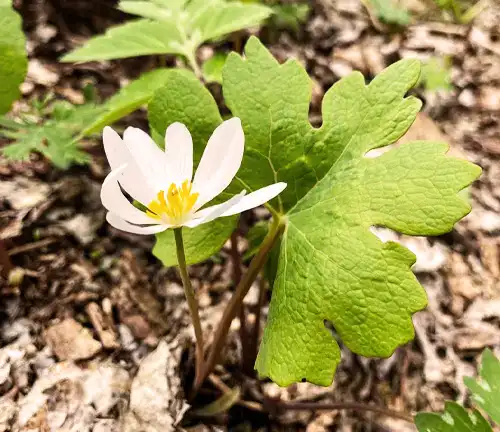
These blooms, which typically appear in early spring, make it a sought-after addition to woodland gardens. Beyond its aesthetic appeal, Bloodroot has been used for its medicinal properties, particularly in traditional herbal medicine, where it is believed to possess anti-inflammatory and antimicrobial properties. However, it’s essential to handle Bloodroot with caution, as its compounds can be toxic if ingested in large quantities.
This plant’s rich history, striking beauty, and traditional uses have cemented its place as a unique and culturally significant botanical gem.
| Characteristics | Description |
| Scientific Name | Sanguinaria canadensis |
| Common Names | Bloodroot, Bloodwort, Red Puccoon |
| Family | Papaveraceae |
| Native Range | Eastern North America |
| Habitat | Woodlands, deciduous forests |
| Plant Type | Perennial herb |
| Height | 15-20 cm (6-8 inches) |
| Leaf Shape | Lobed, palmate |
| Flowers | Single, white with 8-12 petals, appearing in early spring |
| Rhizomes | Contain red-orange sap |
| Cultural Significance | Historically used by indigenous cultures |
| Medicinal Uses | Traditional herbal medicine for anti-inflammatory and antimicrobial properties |
| Toxicity | Can be toxic if ingested in large quantities |
| Gardening | Popular in woodland gardens for its aesthetic appeal |
Botanical Beauty of “Bloodroot”
Hidden in the enchanting woodlands of eastern North America lies a botanical gem known as “Bloodroot” (Sanguinaria canadensis). This perennial herb, with its elegant white flowers and distinctive lobed leaves, is a captivating sight for any nature enthusiast. In this article, we delve into the various facets of Bloodroot, from its aesthetic appeal to its ecological importance and common uses.
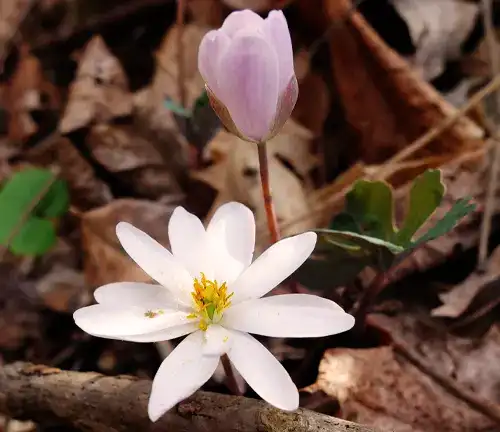
Woodland Elegance
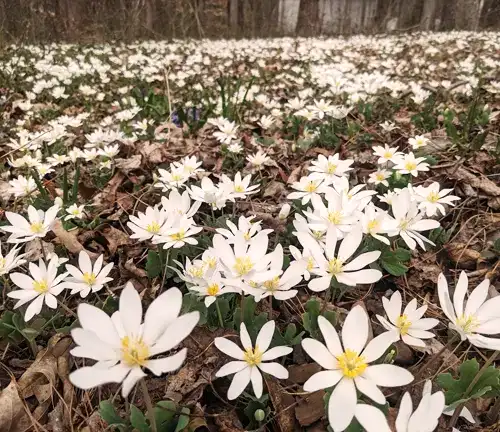
One of the most striking features of Bloodroot is its woodland elegance. Standing at a modest 15-20 cm (6-8 inches) in height, it makes a subtle yet significant statement in the forest understory. Its solitary, white, multi-petaled flowers emerge in early spring, contrasting beautifully with the lush green surroundings. These delicate blooms are a sight to behold and attract both wildlife and human admirers alike.
Ecological Importance
Beyond its visual charm, Bloodroot plays a crucial role in the ecosystem. It is a native species that has adapted to the woodlands of eastern North America. As a spring ephemeral, it appears when the forest is still waking from its winter slumber, providing an early nectar source for pollinators. In doing so, it supports various insects and contributes to the overall biodiversity of the woodland ecosystem.

Cultivation and Conservation
Due to its appealing appearance and cultural significance, many gardeners have attempted to cultivate Bloodroot. However, caution is necessary as it is sensitive to disturbance. In the wild, its populations are vulnerable, and overharvesting poses a significant threat. Conservation efforts are underway to protect this delicate species, ensuring that it continues to thrive in its natural habitat.
Fragrance
Bloodroot may not be renowned for its fragrance, but it holds a unique scent often described as earthy and subtle. Some appreciate the aroma as a sign of spring’s arrival in the woods, adding to its mystique and allure.
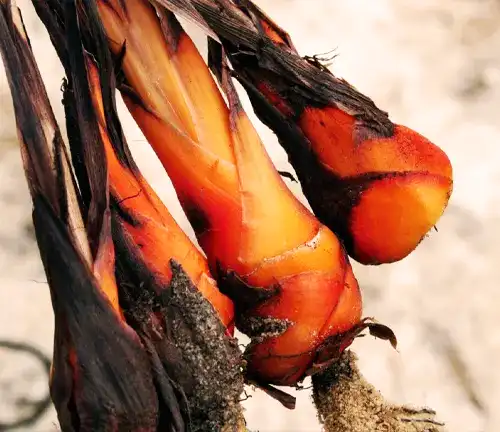
Soil Stabilization
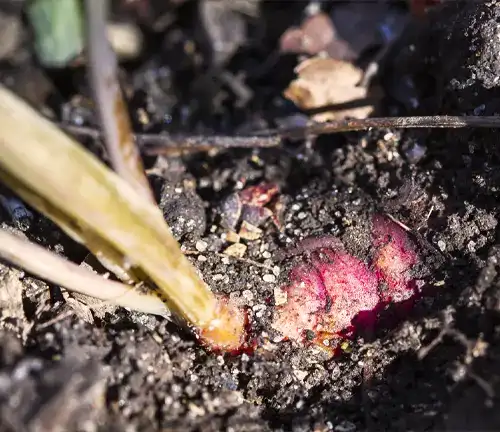
In addition to its visual appeal and fragrance, Bloodroot offers practical benefits. Its rhizomes have the remarkable ability to stabilize soil and prevent erosion. This makes it a valuable addition to woodland gardens, where it not only adds beauty but also helps maintain soil integrity.
Common Uses
Bloodroot has been valued for centuries for its various applications. Indigenous cultures used the plant’s red-orange sap for body paint, dyes, and medicinal purposes. While it should be used with caution due to its potential toxicity, it remains an intriguing part of traditional herbal medicine.
Benefits
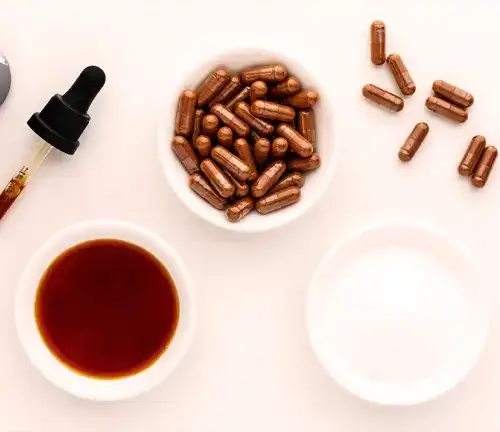
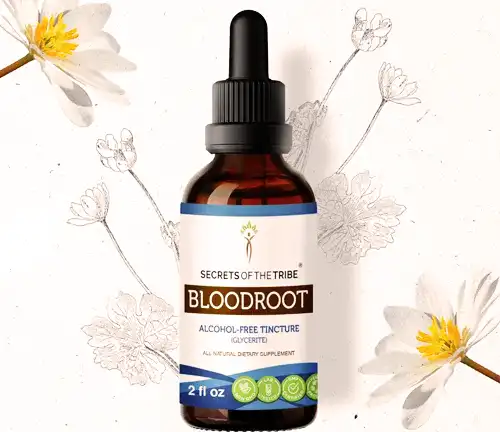
Despite its toxic nature in large quantities, Bloodroot has some recognized benefits in traditional medicine. It is believed to have anti-inflammatory and antimicrobial properties, which have been utilized for treating various ailments. Its cultural significance adds to its allure, making it a plant of rich historical value.
Different Species
Sanguinaria canadensis
This is the most well-known and recognized species commonly referred to as “Bloodroot.” It is native to eastern North America and is known for its white flowers and red sap.
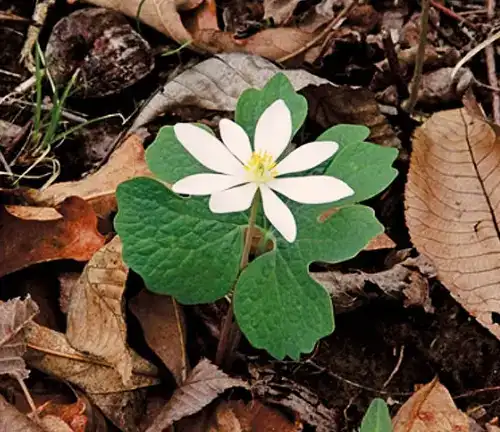
Sanguinaria canadensis forma multiplex
This is a double-flowered form of Sanguinaria canadensis, characterized by having more than the typical number of petals in its flowers.
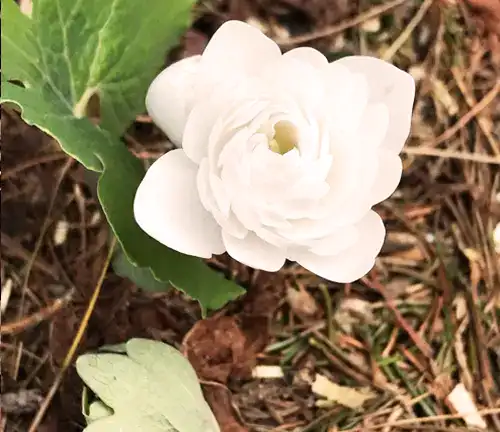
Sanguinaria minor
Also known as the “Small Bloodroot” or “White Puccoon,” it is a species closely related to Sanguinaria canadensis and is native to the southeastern United States.
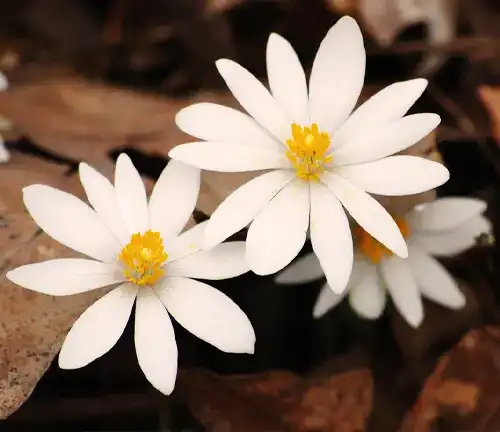
Haemanthus spp.
Some species of Haemanthus, a genus of plants native to South Africa, are also colloquially referred to as “Bloodroot” because of their red sap. However, these are not related to the North American Bloodroot (Sanguinaria canadensis).
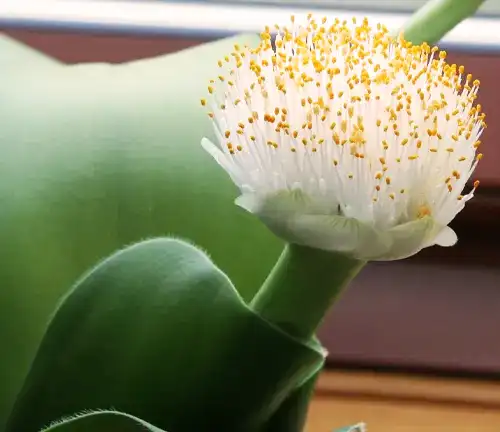
Frequently Asked Questions (FAQs)
- What is Bloodroot?
Bloodroot (Sanguinaria canadensis) is a perennial herb native to eastern North America known for its unique appearance, white flowers, and red-orange sap. - Why is it called “Bloodroot”?
The plant gets its name from the red sap found in its rhizomes and stems, which has been historically used for various purposes, including body paint and dye. - What does Bloodroot look like?
Bloodroot features lobed, palmate leaves and solitary white flowers with 8-12 petals. The plant stands at a height of about 15-20 cm (6-8 inches). - Is Bloodroot toxic?
Yes, Bloodroot can be toxic if ingested in large quantities. Its sap contains alkaloids, which can be harmful if consumed. - What are the medicinal uses of Bloodroot?
Bloodroot has been used in traditional herbal medicine for its potential anti-inflammatory and antimicrobial properties. It has been historically used for treating various ailments, but caution is advised. - Can I grow Bloodroot in my garden?
It is possible to cultivate Bloodroot in woodland gardens, but it is essential to handle it with care, as it is sensitive to disturbance. It is best to source plants from reputable nurseries to avoid harming wild populations. - Where is Bloodroot found in the wild?
Bloodroot is native to the woodlands and deciduous forests of eastern North America, from Canada to the eastern United States. - What is the ecological importance of Bloodroot?
Bloodroot is a spring ephemeral, providing an early nectar source for pollinators and supporting biodiversity in woodland ecosystems. - Are there other species of plants called “Bloodroot”?
Some plants in different genera or regions may be colloquially referred to as “Bloodroot” due to red sap or similar characteristics, but Sanguinaria canadensis is the most recognized species by that name. - How can I help conserve Bloodroot in the wild?
To support the conservation of Bloodroot, it’s crucial to avoid overharvesting in the wild, protect its natural habitat, and consider planting it in your garden using ethically sourced plants.


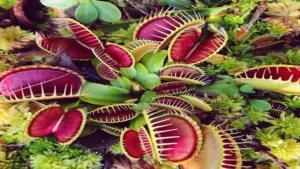
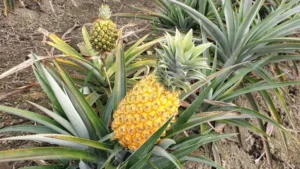
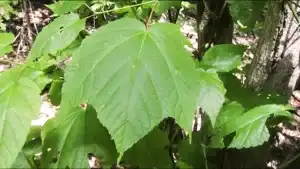
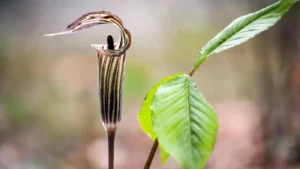
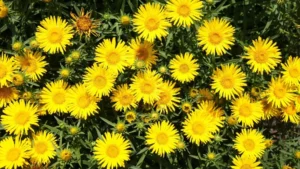



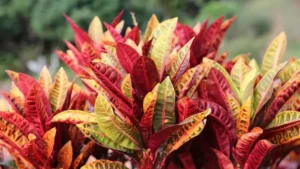
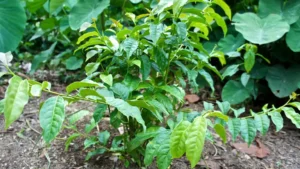
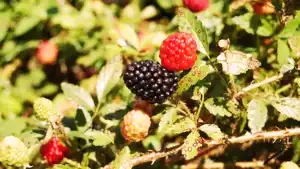

Leave your comment